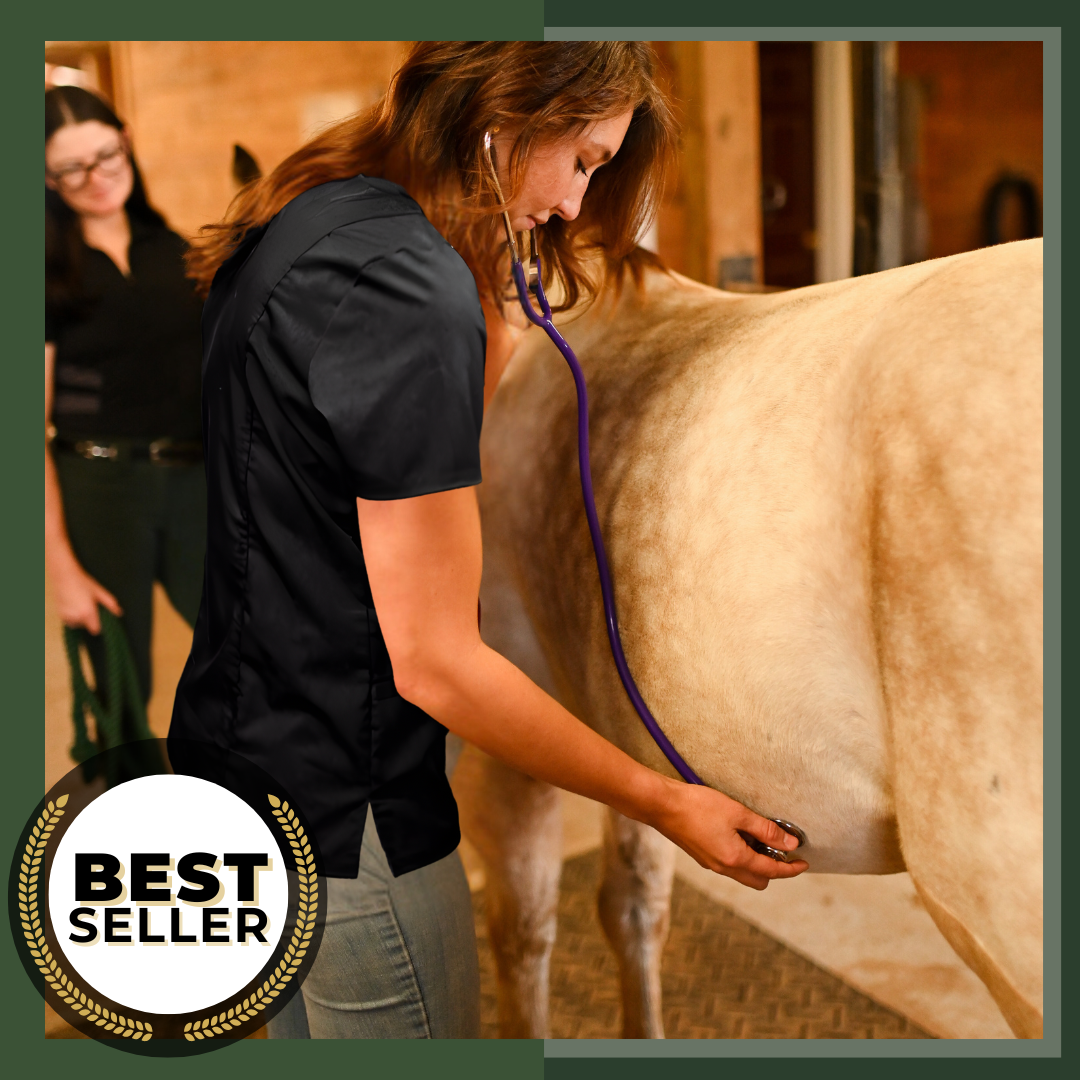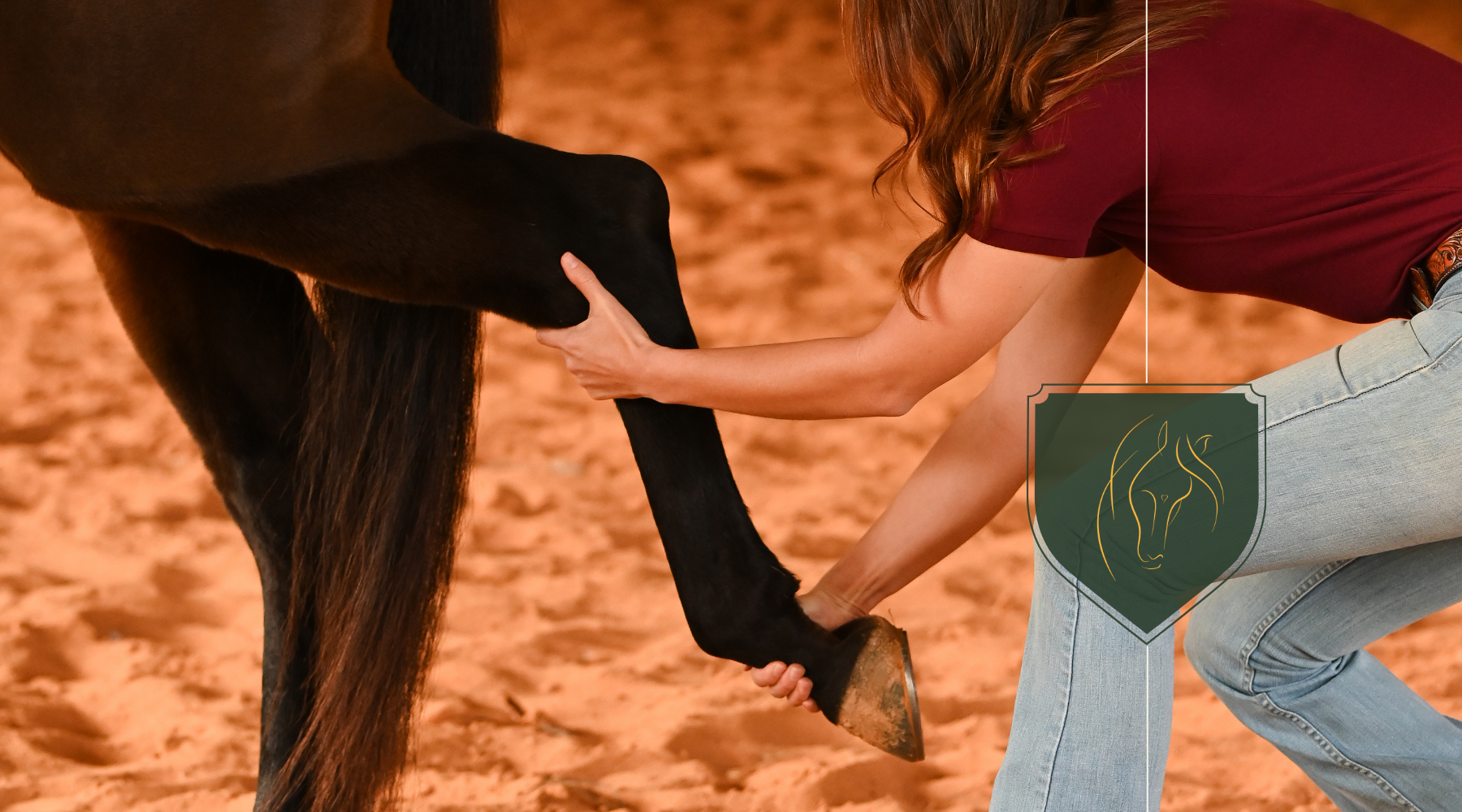
Horse First Aid Essentials: Be Prepared for Equine Emergencies on and off the Trail
When you're responsible for a horse, you're not just a rider or caretaker; you're the first line of defense in an emergency. That's why knowing your horse first aid essentials is non-negotiable. I've had my fair share of equine emergencies, and I can't stress enough the importance of being prepared.
In this article, I'll walk you through the must-have items for your horse first aid kit and share some tips on how to handle common equine injuries (Check out our horse first aid guide). Whether you're at the barn, on the trail, or at a show, you'll be equipped to tackle any situation with confidence.
Importance of Horse First Aid
When I consider the well-being of my equine companions, the significance of a comprehensive horse first aid kit can't be overstated. It's the frontline defense in preventing minor injuries from becoming serious health concerns. Quick and appropriate first aid intervention can dramatically affect the recovery time and the overall health of a horse after an injury.
Knowing how to address common problems is crucial. A horse can encounter a variety of injuries ranging from superficial cuts to more severe conditions like colic or choke. Having the necessary supplies on hand and the knowledge to use them effectively means I can stabilize my horse until professional veterinary help is available.
Creating a bespoke first aid kit and having it readily accessible is a task that requires careful consideration. It's not just about stocking up on items; it's about being able to know what's inside the kit and how to use each item with confidence. The essentials for a horse first aid kit include:
-
Antiseptic cleansers to clean wounds
-
Wound ointment to promote healing
-
Sterile dressings, gauze, and bandages for managing injuries
-
Digital thermometer to check for fever
-
Hoof pick to check for foot abnormalities or injuries
Beyond these basics, it's wise to include items tailored to my horse’s specific needs and the environments we frequent. For instance, if trail riding is a routine activity, I'd pack extra supplies to manage emergencies that could happen out in the wilderness.
Preparing for emergencies involves more than just stocking up on supplies. It's also about learning proper care techniques. For example, knowing how to correctly clean a wound or support a limb can make a significant difference in healing outcomes. Regular practice and refreshers on basic first aid principles are as essential as the kit itself.
Education on equine health issues, preventative care, and having a solid emergency plan should never be overlooked. I ensure that my first aid kit is always up-to-date, checking expiration dates of products and replenishing used items promptly.
Taking the initiative to be prepared is a crucial aspect of responsible horse ownership. The welfare of my horse in an emergency situation depends greatly on the actions I take and the knowledge I've gained.
Must-Have Items for Your Horse First Aid Kit
Building a proper horse first aid kit means being ready for any equine emergency. I can't overstate the importance of being prepared with the right supplies. Here's what I always have on hand:
-
Antiseptic sprays and ointments are crucial for disinfecting wounds. They help prevent infections and are suitable for minor cuts and abrasions.
-
Sterile dressings, gauze, and bandages serve to protect wounds and promote healing. It's important to have various sizes to cover different wound types.
-
A digital thermometer to check for fever. Remember, a horse's normal temperature ranges from 99.5 to 101.5 degrees Fahrenheit.
-
Saline solution for flushing out wounds or eyes if they become contaminated.
-
A hoof pick to remove debris from hooves, reducing the risk of infection or abscesses.
Basic Care Techniques
Equipping the kit's one thing, knowing how to use it's another. Here's what I've learned:
-
Always approach a horse calmly to avoid additional stress.
-
Clean wounds promptly and apply antiseptic.
-
Monitor the horse's temperature to identify signs of fever or illness.
-
Check hooves regularly — good hoof care helps prevent many common emergencies.
No matter what, it's essential to seek veterinary advice for serious injuries. But with a well-stocked first aid kit and the knowledge to use it, I can handle minor issues with confidence. Remember to regularly check and restock your first aid kit. Supplies can expire or run out, and you don't want to be caught off-guard.
How to Handle Common Equine Injuries
When you're faced with a common equine injury, timely and effective response can prevent the situation from worsening. It's not just about having the right tools but also knowing the steps to take. Here's my guide on how to manage some of the typical injuries horses encounter.
Lacerations and Wounds
Quick action is needed when dealing with lacerations:
-
Clean the wound using saline solution or an antiseptic cleanser to remove dirt and debris.
-
Apply pressure with a clean cloth if there's significant bleeding.
-
Cover the area with a sterile dressing to protect it from further contamination.
Remember, deep cuts or those near joints may require veterinary attention.
Hoof Issues
For hoof injuries, maintaining cleanliness is key:
-
Use a hoof pick to carefully remove stones or debris from the hoof.
-
Check for signs of abscesses, punctures, or thrush.
-
If there's a foreign object embedded, don't remove it yourself – this is a job for the vet.
Muscle Strains
Addressing strain involves rest and observation:
-
Provide your horse with a comfortable area to reduce movement.
-
Apply a cold compress to alleviate swelling.
-
Monitor the horse's gait over the following days for signs of persistent lameness.
Eye Injuries
Eye issues should never be taken lightly as they can escalate quickly:
-
Flush the eye gently with saline solution to clear out irritants.
-
Keep the horse from rubbing its eye to prevent further injury.
-
Seek immediate veterinary care as eye injuries can deteriorate rapidly.
Knowing how to tackle these common ailments is crucial, but it's just as important to maintain a sense of calm. Horses are perceptive creatures that can pick up on stress, so I always approach them with a serene demeanor. Plus, regular practice with non-emergency care makes handling real-world situations less daunting for both the horse and me.
First Aid Tips for Different Situations
When faced with different equine emergencies, knowing the right first aid tips can be lifesaving. Each situation requires a specific approach to ensure the safety and health of your horse.
Dealing with Minor Wounds
For minor scrapes and cuts:
-
Clean the wound thoroughly using saline solution or clean water.
-
Apply an antiseptic to prevent infection.
-
Remove any debris or dirt to avoid contamination.
Addressing Sprains and Strains
If your horse suffers from a sprain or strain:
-
Rest is crucial. Prevent further movement to avoid aggravating the injury.
-
Cold therapy can reduce swelling and inflammation in the early stages.
-
Consult with a veterinarian if there's any sign of serious injury.
Managing Colic Symptoms
In case of signs of colic:
-
Monitor your horse's vital signs and keep a record for the vet.
-
Do not feed your horse as this can exacerbate the problem.
-
Walking your horse may be advised, but only if they are comfortable doing so.
Eye Injuries Precautions
For eye injuries:
-
Avoid touching or treating the eye yourself.
-
Shield the eye from light and debris with a fly mask.
-
Contact your vet immediately as these injuries can escalate quickly.
Remember to always approach a horse in distress with caution to avoid injury to yourself and to keep the animal calm. Quick action with the correct first aid intervention can reduce the risk of complications and promote a smooth recovery. Don't hesitate to reach out to your veterinarian for guidance; professional medical advice is vital in ensuring the health and safety of your horse.
Being Prepared On and Off the Trail
When riding out on the trails or working with horses in the stable, I'm always aware that emergencies can happen at any time. Carrying a well-stocked first aid kit is crucial for providing prompt care. Here’s what I make sure is always in my horse first aid kit:
-
Sterile Gauze Pads and Rolls: For dressing wounds and preventing infection.
-
Veterinary Wrap: This self-adherent bandage is excellent for securing gauze and doesn't stick to the horse's hair.
-
Antiseptic Wipes or Solutions: Crucial for cleaning cuts and scrapes before bandaging.
-
Hoof Pick: To remove debris from the horse’s hooves and prevent further injury or infection.
-
Scissors with Blunted Ends: Essential for cutting bandages without risking injury to the horse.
-
Digital Thermometer: Quick and easy way to check if the horse has a fever.
-
Tweezers: For removing foreign objects from wounds or skin.
-
Saline Solution: I use this to flush out wounds or eyes if necessary.
Additionally, I always carry a comprehensive horse care manual. It's invaluable for reference in stressful situations where I might need to refresh my memory on the right procedures.
Preparation also means knowing basic care techniques, like how to apply a pressure bandage to a bleeding wound or how to properly clean a hoof. Regular practice sessions help me keep my skills sharp, so I'm ready when my horse needs me. Maintaining up-to-date knowledge on horse health is equally important, so I frequently attend equine first aid courses and keep in touch with my vet for the latest recommendations.
I've learned that being prepped goes beyond the contents of my kit. For instance, keeping emergency contact numbers and the location of the nearest equine veterinarian on hand can save valuable time. Moreover, ensuring that my horse's vaccinations and medical records are easily accessible is part of being thoroughly prepared.
Conclusion
Staying prepared is your best defense against equine emergencies. With the right first aid essentials at hand, you're well-equipped to handle unexpected situations. Remember, it's not just about having the items—it's about knowing how to use them. That's why keeping your skills sharp with regular practice and courses is crucial. Keep your horse's medical history within reach and know your vet's number by heart. Here's to safe and happy trails with your equine companion!
Frequently Asked Questions
Q: What items should be included in a horse first aid kit?
A: A horse first aid kit should include sterile gauze pads, veterinary wrap, antiseptic wipes, hoof pick, scissors with blunted ends, digital thermometer, tweezers, and saline solution.
Q: How important is it to carry a horse care manual?
A: Carrying a comprehensive horse care manual is important as it provides guidance on essential care techniques and can help in emergency situations.
Q: How can I stay updated on horse health?
A: To stay updated on horse health, attend equine first aid courses and keep in touch with a vet for regular check-ups and advice.
Q: What information should I keep easily accessible in case of emergencies?
A: In case of emergencies, it is important to keep emergency contact numbers, the location of the nearest equine veterinarian, and the horse's vaccinations and medical records easily accessible.





Leave a comment
This site is protected by hCaptcha and the hCaptcha Privacy Policy and Terms of Service apply.